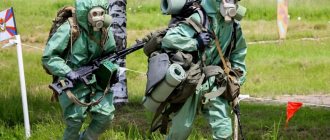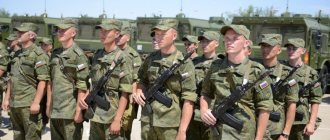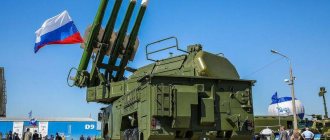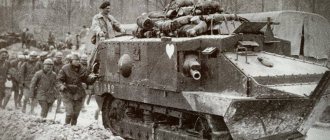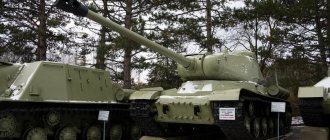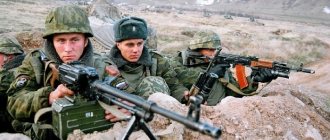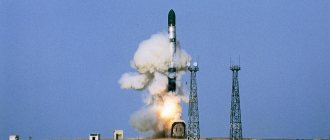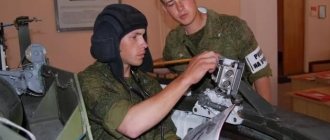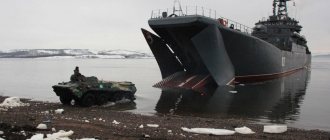Romania
Romania
In the 1930s, Romania and Czechoslovakia were allies in the so-called Little Entente.
Allied relations made it easier for the Romanians to purchase Czechoslovak weapons and military equipment. At the end of 1935, a Romanian military delegation arrived in Prague to negotiate the acquisition of a large batch of armored vehicles. On August 14, 1936, an agreement was signed under which the Romanian army received 35 small tanks ?KD-Praga AH-IVR and 126 light tanks ?koda ?-II-a (LT vz.35). These combat vehicles were named R-1 and R-2, respectively. The R-2 tanks were produced from September 1, 1938 to February 22, 1939. The ?koda company also wanted to sell the license for the production of LT vz.35, presenting an improved version of this machine - ?-II-aR - to the Romanian military at the end of 1939. However, this initiative was not successful.
Light tanks R-2 during a parade in Bucharest. October 1941. Noteworthy is the large three-color (white-yellow-red) “Mikhailovsky cross” (the symbol of the Romanian King Michael I), painted on the roof of the MTO and intended to facilitate the identification of tanks by Romanian and German aircraft.
On November 23, 1940, Romania joined the military-political bloc of the Axis countries and on June 22, 1941, together with Germany, attacked the USSR. R-2 tanks were concentrated in the 1st tank regiment of the 1st armored division "Great Romania", which crossed the Prut on July 3, 1941 and launched an offensive in the direction of Mogilev-Podolsky, fighting mainly with units of the Soviet 2nd mechanized housings. The beginning seemed encouraging - until July 14, the Romanians lost only one R-2, having chalked up two Soviet T-28s. In the battles of July 14–16, three R-2s were already destroyed and five were damaged. Three more vehicles were hit during an attack on Soviet artillery positions while crossing the Dniester on July 19.
R-2
At the end of the fighting in Bessarabia, the 1st Panzer Division was transferred to the 5th Corps, whose task was to capture Odessa, the largest city in the Romanian sector. Already on the distant approaches to Odessa, the Romanians met fierce resistance from Soviet troops. The brains of “Great Romania” were quickly restored - on August 11 the division lost five tanks, on the 12th - eight, on the 13th - nine and on the 14th - 25 combat vehicles! When the Soviet defenses were broken through in the western sector, another 12 R-2 tanks were shot down by Soviet anti-tank artillery fire, and 24 were damaged. After sending 46 damaged vehicles for repairs, the 1st Tank Regiment, as of August 20, 1941, had 20 combat-ready vehicles remaining. In subsequent battles near Odessa, R-2 tanks were not widely used; priority was given to the thicker-armored Renault R-35 from the 2nd Tank Regiment, which could better withstand the fire of 45-mm Soviet anti-tank guns. After the evacuation of the troops of the Odessa defensive region on October 16, 1941, the Romanian tank units went home to recover. Repair of R-2 tanks was carried out by the UMP plant in Ploesti, as well as by the ?koda manufacturing plant in Pilsen. It took several months to return the damaged vehicles to service, but 25 tanks were lost forever.
Light tank R-2 from the Great Romania division near Stalingrad. November 1942.
In the summer of 1942, the Germans handed over 26 Pz.35(t) tanks to the Romanians. The fully equipped 1st Armored Division (109 R-2) returned to the front on August 29, 1942. Realizing that the combat value of the R-2 in the conditions of the Eastern Front was small, the Germans replenished the Romanian formation with 11 Pz.III and 11 Pz.IV tanks. However, this did not save him from complete defeat during the counter-offensive of Soviet troops near Stalingrad. By December 1942, the division had one combat-ready tank and 944 personnel left. In March 1943, the division was again sent to Romania for reorganization and replenishment. By this time, 81 R-2 tanks were irretrievably lost (27 were knocked out in battle, 24 were out of action for technical reasons, 30 were abandoned due to lack of fuel). The Romanian army had 40 R-2s at its disposal. As having no combat value, they were put into reserve.
However, the Romanian command did not want these combat vehicles to stand idle in vain. Between July and September 1943, Leonida converted one R-2 tank into a self-propelled artillery unit. The tank's chassis remained largely unchanged, and the front-mounted machine gun was also retained. The turret was dismantled, and in its place a fixed armored cabin, open at the rear, with a captured Soviet 76-mm ZIS-3 cannon was installed. Tests of the self-propelled gun, called TASAM R-2 (TASAM - Tun Anticar re Afet Mobil), were successful, and in February 1944 an order was issued for the conversion of the remaining tanks.
The Romanian self-propelled artillery mount TASAM R-2 on display at the military museum in Bucharest is the only example of this combat vehicle that has survived to this day.
The TASAM R-2 self-propelled guns were intended primarily to combat Soviet medium and heavy tanks. The ammunition load of the installation (30 artillery rounds), in addition to captured Soviet ammunition, included 76-mm Romanian-style rounds with high-explosive fragmentation and armor-piercing shells. Providing captured Soviet guns with ammunition was made easier by the fact that between the two world wars the Romanian army was armed with 76-mm Russian field guns model 1902, for the shells of which all Soviet 76-mm divisional and tank guns were designed.
By June 1944, another 20 TASAM R-2 self-propelled guns were manufactured, after which their production was stopped, since 76-mm shells were powerless against the new Soviet IS-2 heavy tanks. It was planned to equip the TASAM R-2 with German 88-mm anti-aircraft guns, but Romania’s exit from the war on the side of Germany on August 23, 1944 prevented this.
TASAM R-2
After the country went over to the side of the anti-Hitler coalition, all TASAM R-2 vehicles were assembled in the 63rd company of self-propelled guns, which participated in the liberation of Bucharest, Ploiesti, and Northern Transylvania. Nine self-propelled guns were lost, and the remaining vehicles in service in November 1944 were introduced into the 2nd Tank Regiment, which had a very varied composition of equipment: eight Pz.IVH, eight Pz.38(t), five R-2, 40 R -35 and R-35/45, 13 StuG III and 12 R-2. The regiment came under operational subordination to the commander of the 27th Soviet Tank Brigade and together with it participated in the battles in Western Slovakia. Thus, on April 3–4, 1945, Romanian tank crews supported the 141st Rifle Division of the Red Army during the capture of Bratislava. The number of combat vehicles in the regiment quickly decreased, and it was soon reorganized into a company. The Romanian tank company fought its last battles on May 7–9 south of Brno. By this time, there were no more R-2 tanks left in service. Only one self-propelled gun TASAM R-2 was combat-ready.
Romanian Ground Forces (2020)
Colonel M. Krymov,
Major V. Privalov
The Romanian ground forces, being the main branch of the national armed forces, number up to 50 thousand personnel, which is 70% of the total number of armed forces. They are intended to ensure the security, sovereignty and territorial integrity of the country, as well as participation in international missions and military operations, primarily according to the plans of NATO and the European Union. In 2006, universal conscription was abolished in the country's Armed Forces and a transition to a contract army took place.
Direct leadership of the ground forces is exercised by the chief of staff of the ground forces (commander) through the headquarters and chiefs of the military branches. He is also responsible for the readiness of Romanian units and formations to carry out missions as part of the combined Alliance military forces and the EU response force. The Army celebrates its holiday annually on April 23.
The beginning of the formation of the regular army of Romania dates back to the period of the unification of the Danube principalities of Wallachia and Moldova (without Bessarabia) in 1859. The Romanians, seeking to achieve independence from the Ottoman Empire, participated in the Russo-Turkish War on the side of Russia (1877-1878) and the Balkan Wars (1912-1913).
Bucharest then deployed its national armed forces in World War I and World War II to expand the state's territory. Romania entered the First World War in August 1916 against the background of the successes of the Russian army and under pressure from Russia and the entire military-political alliance - the Entente. The level of combat training of the Romanian army was low, the weapons were outdated: out of 1,300 artillery pieces, less than half were modern.
| Structure of the Romanian ground forces |
| Deployment of Romanian ground forces: 1. Headquarters of the Ground Forces, headquarters of the multinational division “Southeast” (Bucharest); 2. 2nd infantry division "Jetika" (Buzau); 3. 4th infantry division "Jemina" (Cluj-Napoca); 4. United National Training; 5. Babadag training ground; 6. Smyrdan training ground |
In World War II, Romania from mid-1940 to mid-1944 was on the side of Nazi Germany and fought against the USSR and the anti-Hitler coalition. By June 22, 1941, the armed forces had 35 R-1 tankettes, 126 R-2 (LT-35) light tanks purchased from Czechoslovakia, 75 French R-35s and 75 obsolete Renault FT-17s, about 480 armored vehicles.
The total number of Romanian troops deployed against the USSR was more than 340 thousand people. During June-July 1941, the territories that Bucharest had ever considered “Romanian” were occupied - Bessarabia and Bukovina, the front line moved to the Dniester River. However, the state continued to actively participate in the war.
On August 19, 1941, Ion Antonescu, at that time the prime minister and conductor of the country, announced the creation of Transnistria - a territory between the Dniester and the Bug with an area of 44 thousand km2 with a population of 1.2 million people (the entire Odessa region, the southern regions of Vinnitsa and the western regions of the Nikolaev region ) with its center in Tiraspol, and later in Odessa. On August 30, 1941, Germany signed an agreement in Bendery, in which it officially recognized the territorial acquisitions of Romania.
The German command in 1941-1942 actively involved the Romanian ground forces in the battles for Odessa, the Crimean Peninsula, and later for the city of Stalingrad. Participation in aggression against the USSR was costly for Romania itself. On the Eastern Front, its troops suffered significant losses. Only near Odessa, during the capture of Crimea and Uman, they lost more than 130 thousand people killed and wounded. The biggest defeat was suffered at Stalingrad, where the Red Army, during the offensive in November 1942 - February 1943, completely defeated the forces of the 3rd and 4th Romanian armies. Losses amounted to about 160 thousand military personnel.
On August 23, 1944, against the backdrop of the successful advance of Soviet troops across Romanian territory, an anti-fascist coup took place in Bucharest, and on the 24th King Michael I declared war on Germany. The 1st and 4th Romanian armies, together with Soviet troops, liberated the territory of the country from the Nazis, and then Hungary and the Czech Republic, and were actively involved in the battles for Budapest in February 1945 and Prague in May of the same year.
In total, in World War II, Romania's losses against the USSR amounted to more than 475 thousand people, of which over 245 thousand were killed and died from wounds and diseases. In battles with Hungarian-German troops in 1944-1945, the Romanians irretrievably lost another 21.7 thousand people.
At the same time, as a result of the war, Bucharest returned Bessarabia and Bukovina to the USSR, and also transferred Fr. Zmeiny and part of the Danube Delta. Southern Dobruja remained part of Bulgaria, Hungary returned Northern Transylvania to Romania.
In the post-war years (until 1990), Bucharest was part of the Warsaw Pact Organization (WTO). A fairly powerful military-industrial complex was created in the country, capable of producing military equipment of almost all classes, but not of very high quality.
By the time of the collapse of the Warsaw Division in the North of Romania, 2,715 tanks (of which about 1 thousand T-34s), 3,100 armored fighting vehicles of various classes and 3,817 units of field artillery guns were in service.
Currently, the structure of the Army includes: the main headquarters, two infantry divisions and the headquarters of one multinational, separate brigades, including the 6th Special Forces, an anti-aircraft missile regiment, a security regiment, training and logistics formations, and other units and subunits. Infantry divisions include 3-4 brigades (motorized infantry, mechanized or mountain infantry), artillery and anti-aircraft missile regiments, as well as separate combat and logistics support battalions. In addition, the headquarters of the multinational NATO Allied Forces Division “South-East” is located in the Bucharest area.
| Reference data Equipment and weapons of the Romanian ground forces | ||
| No. | Name | Qty |
| Armored vehicles of tank and mechanized units | ||
| 1 | Tank TR-35 M1 "Bison" | 289 |
| 2 | Tank T-56 | 530 |
| 3 | BMP MLI-84 "Zhderul" (ML-84M) with Israeli ATGM "Spike-LR" | 122 |
| 4 | Armored personnel carrier "Pirana-3S" (manufactured by General Dynamics) | 36 |
| 5 | Amphibious armored personnel carrier TAB "Zimiru" | 65 |
| 6 | Armored vehicle (American made) | — |
| 7 | Armored vehicle M1113 "Humvee" (American production) | 300 |
| 8 | Armored vehicle M1114 "Humvee" (American production) | 22 |
| 9 | Armored vehicle of the "Vamtak" type (American production) | 62 |
| Armament of missile forces and artillery | ||
| 10 | Anti-aircraft missile system 2K12M "Kub" (SA-6) | 40 |
| 11 | SAM 9K33M3 "Osa-AKM" (SA-8) | 28 |
| 12 | MANPADS "Strela-1" (CA-94) | 208 |
| 13 | Launcher of the Strela-2 air defense missile system (SA-95) | 40 |
| 14 | Anti-aircraft self-propelled artillery mount "Gepard" (German production) | 36 |
| 15 | Anti-aircraft gun "Oerlikon" (2 x 35 mm) | 72 |
| 16 | MLRS "Larom" | 54 |
| 17 | SDU 2S1 “Gvozdika” | 24 |
| Engineering troops equipment | ||
| 13 | Medical tracked armored vehicle MLI-84M | n.d. |
| 19 | Mobile drilling rig | n.d. |
| 20 | Trench excavator NX 7 B3 | n.d. |
The ground forces are armed with about a thousand T-55, TR-580 and TR-85 tanks1
, 1,500 armored combat vehicles (AFVs), more than 1,300 artillery systems and up to 200 multiple launch rocket launchers (MLRS).
However, of the existing tanks, combat vehicles and artillery systems, only 30% can be classified as modern. Obsolete equipment is gradually written off and destroyed through recycling, the rest is transferred to long-term storage.
Bucharest’s desire in the 90s of the last century to actively participate in European and international politics determined the direction of the ground forces’ activities to achieve interoperability with the armed forces of the leading Western countries that are members of NATO, and the poor equipment with modern weapons led to the development of predominantly defensive actions and peacekeeping issues activities.
To quickly join the alliance, Romanian units have been involved in training activities under the NATO Partnership for Peace program since 1994. After joining the North Atlantic Alliance (March 29, 2004), they are actively involved in exercises under coalition plans both within the country and abroad. In 2019, the most significant of them were the NATO Allied Forces exercises Saber Guardian 2019, as well as the multinational combat training events Sarmis 2019, Scorpio Legacy 2019, Chetatya 2019 and Vigorous Warrior 2019 » on national territory.
The level of combat training of Romanian units allowed the use of combined formations in the operation of the International Security Assistance Forces in Afghanistan (2002-2014), as well as as part of the multinational coalition in Iraq (2003-2009). Currently, military personnel of the Romanian army are taking part in the NATO peacekeeping operation Joint Enterprise in Kosovo, the NATO training mission Resolute Support in Afghanistan, the operation of the multinational group of troops (forces) of the EU states in Bosnia and Herzegovina “Althea”, the EU mission to assist in the reform of the security forces of Mali, the UN stabilization mission in the Democratic Republic of the Congo and a number of others.
The main educational institution for training officers for the Army is the Military Academy named after Nicolae Belcescu (Sibiu). It accepts contract military personnel, as well as boys and girls who have graduated from military or civilian lyceums. The duration of study is four years. Upon graduation from the academy, graduates are awarded the rank of junior lieutenant.
The construction of the Army of Romania for the period until 2025 is carried out in accordance with the “Strategy for the Development of the Armed Forces” and the “Rearmament and Modernization Program”. The priority areas of development are: improvement of the management system; optimization of combat personnel; purchase and adoption of modern types of weapons and military equipment (WME), compatible with those available in other NATO countries, as well as modernization of existing models of WME.
The main financial allocations are allocated for updating the fleet of armored fighting vehicles, long-range MLRS systems with the ability to launch tactical missiles, as well as strengthening the air defense/missile defense system.
In particular, during 2022, deliveries of the first Pirana-5 armored personnel carriers purchased from the American corporation General Dynamics are expected.2
. At the same time, the Romanian Ministry of Defense is considering the issue of receiving the next batch of these armored combat vehicles (AFVs). In addition, by 2022 it is planned to purchase 54 Khimars MLRS launchers. As part of the modernization of air defense systems, it is planned to deliver by 2026 three of the seven anti-aircraft missile batteries of the Patriot air defense system purchased from the United States.
The Army Command also pays great attention to the creation of national unmanned aerial vehicles (UAVs). Currently, R&D is actively underway to develop similar systems based on the Boreal-5E mini-UAV.
As part of the development of the educational and material base, the infrastructure of the united national educational (190 km north-west of Bucharest), as well as the Babadag (210 km north-east of Bucharest) and Smyrdan (180 km north-east of Bucharest) training grounds are being modernized with with the aim of ensuring high-quality implementation of national and coalition operational and combat training activities.
It should be noted that since February 2022, the 1st Battalion of the 64th Armored Regiment of the US Army has been stationed in the country, namely at the Mihail Kogalniceanu Air Force Base. It consists of 500 personnel, M1A2 Abrams MBT, M2A3 Bradley infantry fighting vehicle, and other equipment and weapons. Its deployment was part of the US commitment to secure NATO's eastern flank as part of Operation Atlantic Resolve.
Thus, the modern Romanian army, not possessing advanced models of military equipment and weapons, is gradually re-equipping with modern types of Western-made weapons and military equipment. The command strives to maintain the required level of combat readiness of national ground forces through active participation in multinational exercises together with the most militarily developed Western countries.
1
Soviet-made T-55 tanks make up about 50% of the tank fleet. The Romanian-made TR-580 tank is an improved and extended version of the T-55 with six rollers (20%). The TR-85 tank is a variant of the T-55 (30%) modernized in Romania.
2
In 2022, the Romanian Ministry of Defense signed a contract worth 895 million euros with the United States for the supply of 227 Swiss-developed Pirana-5 armored personnel carriers. In 2019, deliveries were disrupted due to numerous defects during the assembly of machines identified during acceptance. The transfer of the first 36 armored fighting vehicles to the Romanian side is expected in the near future.
Foreign military review. - 2022. - No. 9. — P. 36-44
